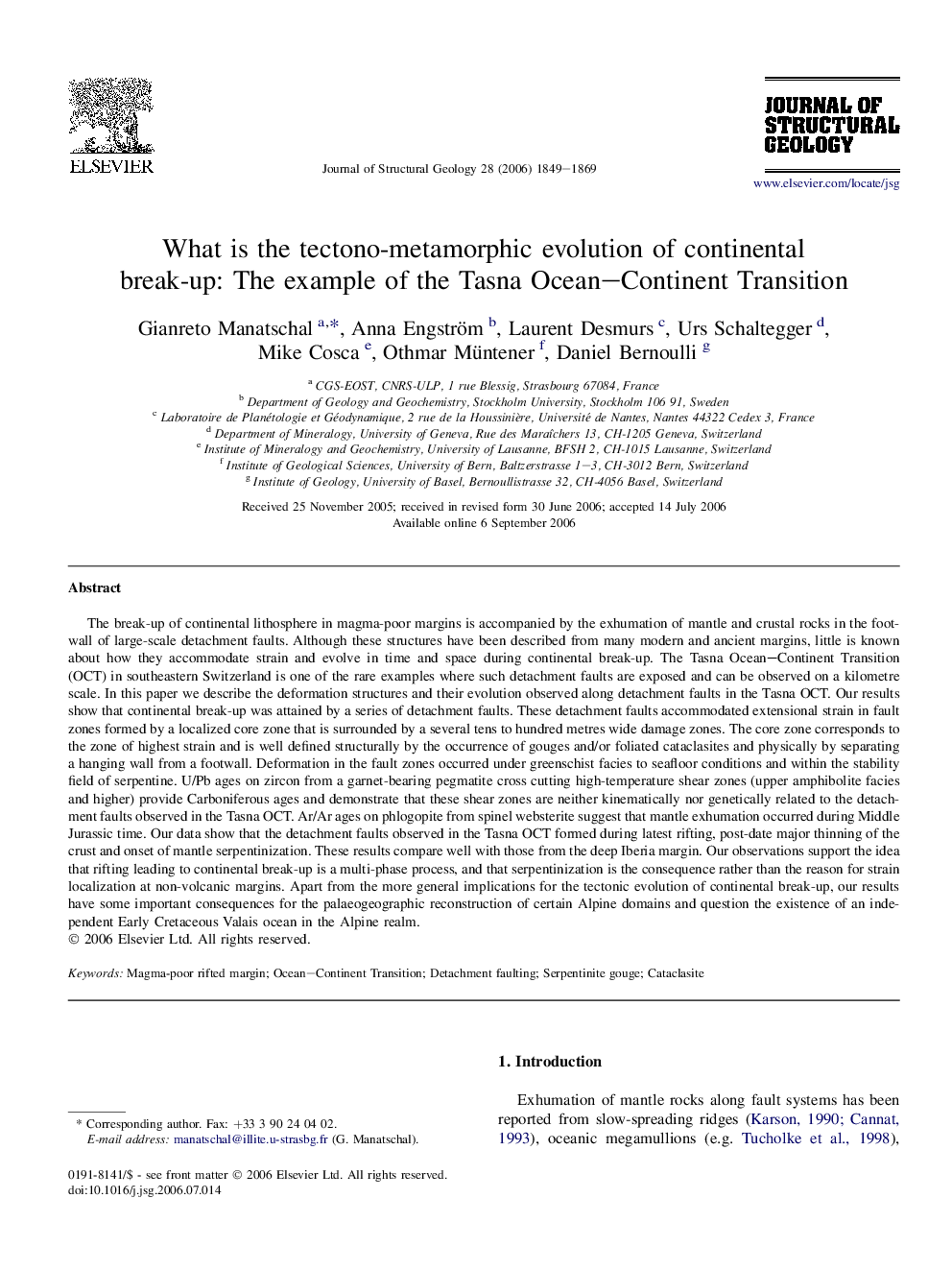| کد مقاله | کد نشریه | سال انتشار | مقاله انگلیسی | نسخه تمام متن |
|---|---|---|---|---|
| 4734110 | 1357072 | 2006 | 21 صفحه PDF | دانلود رایگان |

The break-up of continental lithosphere in magma-poor margins is accompanied by the exhumation of mantle and crustal rocks in the footwall of large-scale detachment faults. Although these structures have been described from many modern and ancient margins, little is known about how they accommodate strain and evolve in time and space during continental break-up. The Tasna Ocean–Continent Transition (OCT) in southeastern Switzerland is one of the rare examples where such detachment faults are exposed and can be observed on a kilometre scale. In this paper we describe the deformation structures and their evolution observed along detachment faults in the Tasna OCT. Our results show that continental break-up was attained by a series of detachment faults. These detachment faults accommodated extensional strain in fault zones formed by a localized core zone that is surrounded by a several tens to hundred metres wide damage zones. The core zone corresponds to the zone of highest strain and is well defined structurally by the occurrence of gouges and/or foliated cataclasites and physically by separating a hanging wall from a footwall. Deformation in the fault zones occurred under greenschist facies to seafloor conditions and within the stability field of serpentine. U/Pb ages on zircon from a garnet-bearing pegmatite cross cutting high-temperature shear zones (upper amphibolite facies and higher) provide Carboniferous ages and demonstrate that these shear zones are neither kinematically nor genetically related to the detachment faults observed in the Tasna OCT. Ar/Ar ages on phlogopite from spinel websterite suggest that mantle exhumation occurred during Middle Jurassic time. Our data show that the detachment faults observed in the Tasna OCT formed during latest rifting, post-date major thinning of the crust and onset of mantle serpentinization. These results compare well with those from the deep Iberia margin. Our observations support the idea that rifting leading to continental break-up is a multi-phase process, and that serpentinization is the consequence rather than the reason for strain localization at non-volcanic margins. Apart from the more general implications for the tectonic evolution of continental break-up, our results have some important consequences for the palaeogeographic reconstruction of certain Alpine domains and question the existence of an independent Early Cretaceous Valais ocean in the Alpine realm.
Journal: Journal of Structural Geology - Volume 28, Issue 10, October 2006, Pages 1849–1869